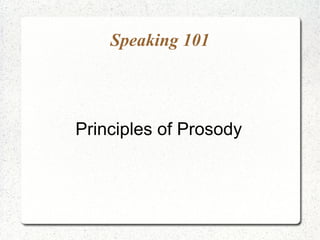This document discusses the principles of prosody when reading aloud. It defines prosody as how meaning is created through changes in pace, stress, loudness, and pitch. It provides examples of applying each prosodic element and learning activities for students to practice using prosody when reading passages. The goal is to help students learn to read with greater expressiveness and convey meaning through their voice.














